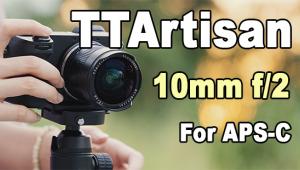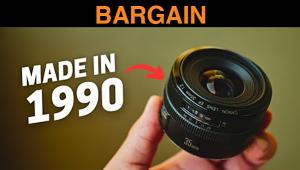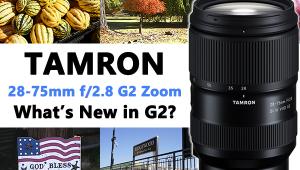It is a professional lens intended for use on film and full-frame FX cameras. I think this is Nikon's best lens ever produced. - Markus Lattner
Nikon’s AF-S Nikkor 70-200mm f/2.8G ED VR II Lens; A Fast, Constant Aperture Zoom With Vibration Reduction
Nikon’s entry into past universal 80-200mm f/2.8 lenses started back in 1978 with a manual focus, push-pull lens checking in at 4 lbs. Ten years later the autofocus model arrived sporting ED (Extra-low Dispersion) glass; ’92 marked the “D” package. In ’96 the AF-S version came along, followed by the new generation of front motor drive “G” models. Now we have the latest manifestation with the inclusion of 21 elements in 16 groups with seven ED glass elements and Nano Crystal Coat. In short, a long legacy for a classic zoom lens.
 |
|
|
Compared to the previous model, this new entry is slightly shorter (by a quarter of an inch) and slightly heavier (about 3 oz) but holds the same outside diameter as its predecessor. It’s also a bit more expensive, with a street price of around $2400. It takes the same 77mm filters as the older model, but lacks the focus lock buttons on the front of the lens barrel.
Design-wise, the lens barrel retains the same diameter right up to the manual focus ring, and then enlarges slightly as if to tell the photographer, yes, you now have the focusing ring under your fingers. Compared to the past model, which to me had too many ins and outs on the barrel, it feels more comfortable in the hand, almost to the point where it felt like something was missing on the lens. All of the rubber gripping surfaces are sharply defined, and the zoom ring moves from left (70mm) to right (200mm) in a quarter of a turn with just the right amount of drag.
All lens controls are on the left side and top to bottom, including the focusing mode switch that has a new wrinkle. Now three selections are available—first is the M/A position, in which autofocus can be overridden by focusing the lens manually with the focus ring; the A/M selection has the same function but, according to Nikon, “focus ring detection sensitivity is lower” than in the M/A mode. In simple terms, with the switch in this A/M position, it avoids canceling the AF setting by accidentally moving the focus ring. Finally, for deliberate focusing, the manual setting is still present and, on this upgrade, you can focus down to 4.6 feet.
 |
|
|
The “limit” switch allows you to curb the range of usable focus to keep the camera from hunting for the subject at too far or too close a distance. If the subject is closer than 16 feet use Full; on the other hand, if the subject is always more than 16 feet away, use the infinity-5m mode. The VR control has two settings—On or Off. As to the VR mode, for everyday use or when panning, Normal is good; when taking photos from a moving vehicle employ the Active setting. Finally, opposite the mode switch is a tripod collar adjusting screw, which allows you to rotate the lens on its axis for vertical or horizontal shots.
As to build and features, you have a constant f/2.8 aperture throughout the zoom range. Nikon’s Nano Crystal Coat and Super Integrated Coating help to keepghosting and flare at bay while enhancing light transmission and color. The sevenED elements assist to minimize chromatic aberrations while the nine-bladed diaphragm adds a more realistic appearance to out-of-focus backgrounds.
Then, alas, there is the flower-shaped lens hood. I think Nikon in all their wisdom blew this one, as using the lens in the field I found: (1) it’s too short and (2) the cutouts in the “petals” are too deep for practical use. In the early morning light when shooting at 45? to the sun, I found that I did get flare into the lens, which only abated when I put my hand around the shade to prevent it.
In all honesty, Nikon should refrain from making a fashion statement and re-engineer this to a more practical design, much as they had on the first AF-S series. And never stand this lens with this shade on its head when changing lenses—it will cause the lens to tip over.
Aside from this one negative feature, I found this lens a pleasure to use in the field under all conditions. Photographing my grandson’s basketball game, the lens was very fast on the uptake. I could shoot at 1⁄500 sec with extremely sharp, clean and crisp images at f/3.5. I also shot at lower speeds to try the new VR improvement (up to four shutter speed steps) and although the new system seemed a little more twitchy than the earlier model, it worked like a charm. Optically, f/5.6, f/8, and f/11 are the best of the best for sharpness, with f/5.6 taking the prize. I never did find any problem with vignetting.
 |
|
|
In conclusion, I find this lens more exciting to use then its predecessors; it’s quicker, sharper, brighter, and, although it’s a bit heavier (try 7 lbs total when mounted on my D3X), I can live with that. With this new upgrade, this pro-level Nikon zoom is among the best of the best.
Technical Specifications
Nikon AF-S Nikkor 70-200mm f/2.8G ED VR II
Aperture Range: f/2.8 to f/22
Minimum Focusing Distance: 4.6 feet at all focal-length settings
Maximum Overall Length: 8.1” (without lens shade)
Weight: 54.3 oz (3.39 lbs)
Focusing: Internal focusing, Silent Wave Motor
Filter Attachment Size: 77mm
Street Price: $2399
Stan Trzoniec is a frequent contributor to Shutterbug. His two new books Autumn in the Country and Digital Outdoor Photography are available and autographed through his www.outdoorphotographics.com website. He can be reached via e-mail at: fotoclass@aol.com.
For more information, contact Nikon, Inc. at: www.nikonusa.com.
- Log in or register to post comments


















































